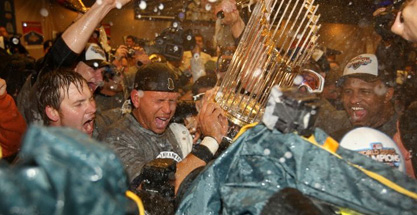|
|
Monday Morning Quarterback Part IBy BOP StaffNovember 9, 2009
Josh Spiegel: This may be something closer to personal taste, but right now, Zemeckis' version of animation is the lowest on the totem pole. My biggest issue with Disney's A Christmas Carol is something that others complained about with regards to Polar Express and Beowulf: the dead, dead eyes of the characters. Some are more distracting than others, but I can't get too immersed in an experience that promotes realism but seems more like it's starring zombies. Right now, a Pixar movie with 3-d technology is the most immersive experience there is, to my mind. Kim Hollis: I agree that Zemeckis's animation feels off, and I do think it's largely because the eyes aren't as expressive as they ought to be. I still find it easiest by far to become immersed in Pixar films, regardless of whether they are 3-D or not. If we're talking about movies that have used the 3-D technology most effectively, Coraline leads the pack, followed by Meet the Robinsons. Jason Lee: This question recalls for me a statement made by Roger Ebert in his review of Princess Mononoke: "I go to the movies for many reasons...I want to see wondrous sights not available in the real world, in stories where myth and dreams are set free to play. Animation opens that possibility, because it is freed from gravity and the chains of the possible. Realistic films show the physical world; animation shows its essence. Animated films are not copies of 'real movies,' are not shadows of reality, but create a new existence in their own right." I 100% agree with Ebert on this and feel the same way as Kim does. I don't need realism in my animation . . . I want boundless, imaginative worlds where the style of animation itself helps tell the story. For this reason, I enjoy a film like The Triplets of Belleville much more than anything Zemeckis has done.
|

|
|
|

|
Friday, November 1, 2024
© 2024 Box Office Prophets, a division of One Of Us, Inc.


